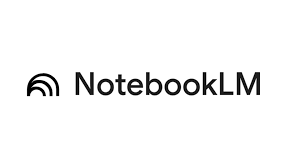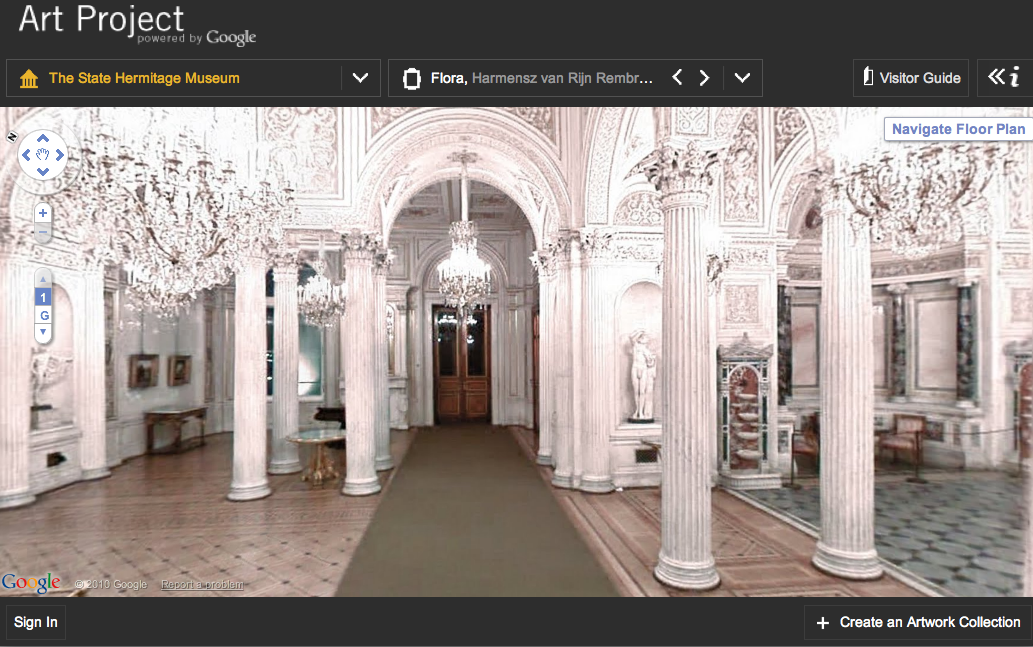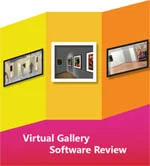“When I’m walking around an art gallery, rooms full of paintings, after 15 or 20 minutes, I really am not thinking about the painting, I’m not connecting to them. Instead, I’m thinking about a cup of coffee that I desperately need to wake me up. I believe somebody put the painting on the wall because they think it is good enough to be there. But I don’t see it. I feel unhappy and guilt about my stupidity.” Said Tracy Chevalierin her TED speech about “Finding the story inside the painting” How many of you also suffer from gallery fatigue?
MOMA's Art Lab App: Play with the Sounds and Shapes of Art!
The sublime James McNeill Whistler once said, “Nature contains the elements, in colour and form, of all pictures, as the keyboard contains the notes of all music. But the artist is born to pick, and choose, and group with science, these elements, that the result may be beautiful--as the musician gathers his notes, and forms his chords, until he bring forth from chaos glorious harmony.” In the years since, the relationship between art and music has progressed from a silent harmony to a colorful crescendo.
Viewpoints: A New Photo App Centered on the Style of Artist David Datuna
In 2008, Damien Hirst took a decision that raised many eyebrows and caused others to furrow. He bypassed his gallery (Gagosian), and took his works directly to auction at Sotheby’s. While Hirst’s move was as audacious as a shark in formaldehyde, his motivations were probably (mostly) monetary and sensationalistic. Yet the desire to bypass the selectivity of galleries and create awareness or a market for their art is not unique to artists such as Hirst. But while he resorted to a giant of an auction house, artists today can use something as small as an app.
WikiLoot: A Proposal to Battle Art Smuggling with Crowdsourcing
If they do indeed exist, the Greek and Roman Gods are bound to be upset. Century after century, they have been removed from their temples in Italy and Greece to be preserved, conserved, and admired in heathen lands. Even in Egypt, the rage of the pharaohs could only be an incandescent gold. But what must really infuriate these divinities and demigods is when they are looted, smuggled, and acquired illegally.
Review of Tate Modern's new app
The Tate Modern recently launched a new app: Magic Tate Ball. The app is free in the same vein as RaceVSTime was (an app that Tate Modern released last January). Here is a review after a few days of trying it out on an iPad (first edition).
Some background:
Magic Tate Ball is a new location-based mobile app from Tate, inspired by the iconic Magic 8 Ball, where players shake the ball in search of an answer to one of life’s mysteries.
Time to Artify It
The art market is steadily adopting the online model, from auction houses to art fairs, from virtual exhibitions to limited edition online prints. Yet the success of this model remains circumspect, with questions abound; will online art fairs attract the clientele of Frieze Art Fair or Art Basel? Can aesthetic preferences be decoded by art genomes? Only in a few years will one be able to judge whether the online art world found success among pixels or became itself pixelated. For now, the move towards the digital has made room for interesting innovations in the area of art business, of which Art.sy, Paddle8, VIP Art Fair are some of the most well known.
Touring the Louvre with a Nintendo 3DS

The eagerly awaited Nintendo 3DS audio guides arrived at the Louvre in early April. For security reasons, they are not quite the action packed adventure that some may have been hoping for. Nevertheless, the audio guides are a great way to tour the museum and have some neat capabilities.
A recent review by Mike Schramm of Joystiq provides insight on just how Nintendo 3DS has been utilized at the Louvre. As he notes, the audio guide lets visitors explore the museum in three ways; an interactive map, a Masterpieces Tour, or an option called Visit a Must-See Work.
The interactive map highlights points of interest within the museum, which indicate the presence of audio commentary for a particular work. According to Schramm, “Each point of interest on the 3DS' map has at least one bit of audio commentary on it, and sometimes more than that, with various museum officials or professors talking about the work in more depth.”
The second option is the Masterpieces Tour, which will lead you to artworks that have known to draw gasps, tears, and unquestionably, l'humanité en masse. The Masterpieces Tour always keeps apace with you thanks to the 3DS has geolocation capabilities. Those with a tendency to wander will be happy to hear that the audio commentary only begins once you are within the vicinity of the masterpiece. The tour is also flexible in that you can visit other works during your tour; the 3DS will simply (and silently) wait for you to get back on track.
The final option is the Visit a Must-See Work, which will light up a “flashing route line” to a famous artwork nearby. If you happen to be lost, the option acts as a silent distress call, saving you from museological trouble one masterpiece at a time.
The Louvre’s audio guide also makes use of Nintendo’s display and 3D capabilities.“In addition to the audio commentaries, there are 3D photos of the galleries, high-definition images of the artworks, and 3D reconstructions to help you identify the exhibits and give you extra information.” Schramm mentioned how high resolution images of artworks are available on the 3DS, making it easier to explore details on the touch screen. The display is also used to showcase different artworks being compared to the artwork at hand during an audio commentary.
The only drawbacks noted by Schramm were the short battery life and the 3DS’s inability to keep up with location changes of certain pieces. Even so, the Nintendo 3DS is a Super Mario sized step forward in interactivity and audience engagement at the Louvre. In fact, the Nintendo 3DS echoes back to The O at the Museum of Old and New Art (MONA), with its geolocation and touch screen capabilities.
Devices such as The O and the 3DS do more than just guide users, they help them discover. And this sense of discovery is a lot more compelling when users are leading themselves through one of the world’s most visited museums. Nintendo in the Louvre? C’estformidable!
Everybody's talking about Google Art Project
Is Google Art Project setting a new standard for the online art world, or is it all just hype? Since its release a few days ago, the public has taken its first stroll through the project’s virtual galleries and in general, first impressions have been enthusiastic.
Birth of Venus
"The Birth of Venus" by Sandro Botticelli. Uffizi Gallery, Florence via Google Art Project
Arts lovers are all abuzz about its fabulous image quality, its accessibility to broad audiences, and its educational potential. While it is too early to tell how much of an impact Art Project will actually make on museums and the art world, the collaborative spirit and innovative technology of the site shows great promise.
For the past 18 months, Google has collaborated with 17 world-class museums to create "Street View"-style tours of their permanent collection galleries. While “walking” around a gallery, a virtual museum-goer can zoom in on any one of 1000 artworks. Many of these images are also accompanied by information such as descriptions of the work, artist biographies, links to more in-depth coverage on the museum’s website, and even some informational videos.
The Hermitage Museum via Google Art Project
The State Hermitage Museum, St. Petersburg, Russia via Google Art Project
Even better, one artwork per museum is available in “gigapixel” resolution of up to 14 million pixels so that you can zoom in almost microscopically close to the canvas. This allows for an intensive scrutiny of artwork that has not been previously available online.
In addition, visitors have the option to curate their own virtual collections, including details that are captured by zoom, and comments about the art. These collections can be shared via Facebook, Twitter or embedded link. It’s free, but you’ll need to sign in to a Google account to create your own collections.
Navigating through the virtual galleries can be mesmerizing. Personally, I loved the feeling of revisiting those museum galleries that I hadn’t been to in years. It was a truly moving experience to be able to unlock those visual memories. And for those museums that I haven’t yet visited but have always wanted to see, it was great to get a taste of what visiting might actually feel like.
The Street-View technology at times can be quite cumbersome and frustrating. Often, I found myself stumbling around, bumping into invisible walls, fruitlessly clicking away and trying to back myself out of corners. In addition, the image resolution of the navigation tool can be fuzzy, especially in contrast with the images of the artwork itself.
Starry Night
The “gigapixel” technology is jaw-dropping, and it feels so much more intimate than your run-of-the-mill online image. As Nancy Proctor and Julian Raby of the Smithsonian point out, "to engage with the work of art in this way transforms the web experience from an informational one to an emotive one.” I imagine, and hope, that these super high-resolution images will someday become ubiquitous in online museum collection. While not a substitute for seeing the art in person, these images are breathtaking in their own right. Detail of "Starry Night" by Vincent Van Gogh. MOMA via Google Art Project
Many pieces in the galleries are blurred out due to copyright issues. While this is understandable, it can also be distracting. Furthermore, most of the museums offer very few actual galleries to explore. MOMA, for example, has just one gallery and the lobby. And the lobby doesn’t have any art that is actually visible or accessible to the viewer. Over at Art21, guest blogger Kevin Buist has some interesting thoughts about the uncanny effect of seeing so many doorways into other galleries that in fact are blocked by those invisible walls.
It’s an impressive debut, despite its flaws. Perhaps most exciting is its collaborative approach to making museums accessible to new audiences around the world. While virtual gallery tours have been offered online before, they have existed in isolation from one another. Art Project brings them together in a visually stunning way, where curious users can wander around museums that they didn’t even know existed.
Some have criticized that Google is cherry-picking the museums involved and therefore curating its artistic content, but I would counter that they had to start somewhere. If the Art Project is successful, doubtless they will need to grow their museum roster, especially to include non-western museums. And I suspect that some of those navigational kinks can be worked out over time as well.
It remains to be seen if the Art Project will truly be able to sustain audiences over time, but I hope that it can. Anytime art can reach new audiences in innovative ways, I think that it’s cause for the art sector to celebrate.
Product Review: Online Submission Tools for Music, Video, Visual Art, and Writing
Now that websites and email addresses are as ubiquitous as mailing addresses and phone numbers, organizations that accept submissions have a new way of receiving work from artists. Many find that receiving submissions via email can be overwhelming, and coordinating review of pieces among judges or editors can result in a lot of cluttered in-boxes and overlooked submissions. Getting a panel together to review portfolios for a competition may be costly, and relying on the numerous moving parts and unforeseen expenses adds a level of complication that could be unnecessary. Fortunately, there are a number of products that have been developed over the past few years that are designed specifically for everything from publishers to film festivals. These online tools enable organizations to receive submissions and have a review process that cuts out the need for endless emails or envelopes of slides or manuscripts.
All of the products below have a central place online where submissions are uploaded by applicants and stored for review, annotation, comments, and more by administrators or jurors. They each excel in different mediums, and have a variety of costs associated with them.
Developed by a writer, this free program was intended to enable small journals and publications to accept and review submissions in a more streamlined and organized manner. Slightly customizable to link from and match your website, this submission tool offers unexpected flexibility and enables publishers to accept payment (submission fees, etc.) electronically with the submission. Developers of submishmash have extended the scope of downloads to include photos, music, and additional types of media. Submishmash streamlines the review process, allowing editors to communicate with one another, make notes on what stage of the process they are in, and enable the authors of work to check in on their submissions to see what stage of the review process they're in. Files are downloaded to editor's computer for review. Quick list of notable features:
Handles word documents (automatically converts to PDF when reviewers download), images, and audio files
Ability to email form and personal letters to author and editors with one click
Ability to fund contests and publications by charging submission fees without setting up a PayPal account
Streamline the editing process and eliminating the messiness and confusion of email submission acceptance by putting all work in one place for review
Allows authors to submit word documents which are automatically converted into PDF for review
Publisher can run multiple competitions and calls for submissions simultaneously
Free to use (if you do end up charging for submissions, a small percentage of that is taken by developers)
Submishmash developers are working on more customizable and advanced versions that will be available for purchase, but plans to keep the current version free.
*CueRate is a product of the Center for Arts Management and Technology, home of this blog.
CueRate is an extremely flexible and powerful tool for arts organizations of all types. Designed especially for organizations "where artists or students apply for scholarships, fellowships, awards or grants," CueRate enables submissions of images, video, audio, or text, and can handle multiple file uploads at one time. Embeddable in your website, it allows artists to submit a resume and artistic statement in addition to their artwork. Files can be reviewed within the application itself, preventing panelists from having to download items onto their computers. Designed to assist large juried competitions with accepting and reviewing submissions from around the world, CueRate has a variety of capabilities that can be implemented both remotely and onsite.
Designed to accept written, video, audio, and image files
Submissions do not need to be downloaded onto your computer, but can be reviewed in the browser
Artist statements, resume, and responses to particular questions can be answered and included with submissions
Customizable to match your website
Tech support
Variable expense based on your organization's needs
Panelists can review from remote locations or adjucation can be moderated in one location with panelists scoring individually but experiencing work at once
Customize your rating system
Score entries in a manner that can be converted into excel, pdf, and online files
Offering a free trial, entrythingy is geared toward galleries and festivals that accept only submissions of images. Structured similarly to CueRate, Entrythingy has many of the same features, and the cost to an organization depends entirely on the volume of submissions received. The website for Entrythingy offers many videos to step interested organizations through the process of using the product.
Handles image files
Entries can be judged online or by jurors downloading work to their computers
Accepted entries can be shown in an online gallery using embeddable code
Entrythingy pricing is based on the volume of submissions received, entrant emails sent, length of time artwork is stored on the site, and gallery sales made using the gallery widget
Organization can hold and accept entries for multiple competitions simultaneously
Good do-it-yourself information online with videos and screen shots to help organizations learn functionality
Like CueRate, Slideroom has proven ideal for organizations and institutions that accept submissions of portfolios of visual work. Used most widely by colleges and universities, reviewers can make comments on images and share these comments with others who are viewing the submissions. From a juror's standpoint, the online layout is snazzy and sharp, and access can be customized across users. Slideroom also allows administrators to generate reports in Excel and PDF.
Handles image files
Online help and support
Attractive layout and design
Pricing plan based on plan level and can be a monthly or annual fee
Applicants see a very clean and simple layout
Applicants can upload text files to include statement and resume
Standardized rating system where jurors can rate pieces and portfolios
Now available: Virtual Gallery Software Review!
Technology in the Arts just released a publication reviewing virtual gallery software for artists and arts organizations interested in creating 3D virtual exhibitions. Access the PDF publication here. The publication reviews three online gallery systems: Virtual Gallerie, Image Armada, and Scenecaster / 3D Scene. Which one is best for your organization? Check out the publication to find out which virtual gallery software meets your needs.
This research was initiated by the CUE Art Foundation, which sought to find an existing software system that will allow artists to create and display virtual exhibitions easily.












